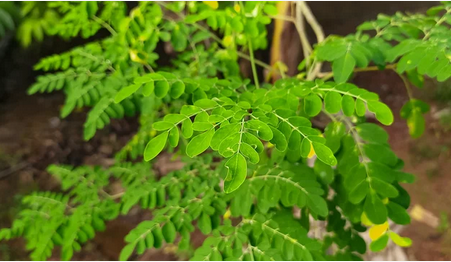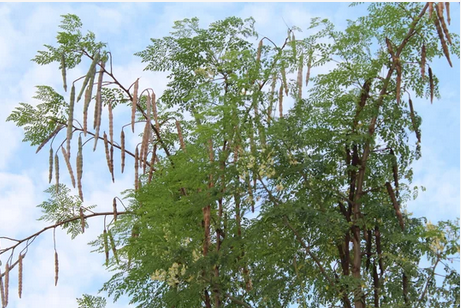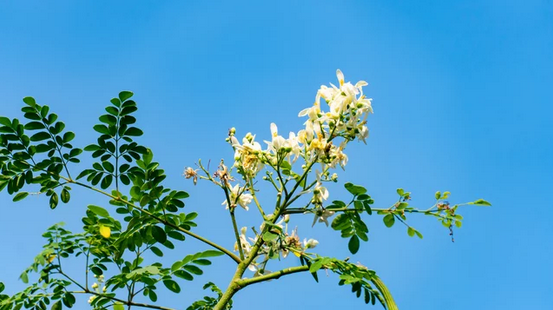Can Moringa Grow in Northern California?
If you love the Moringa tree, which is highly valued since it is extremely high in minerals and nutrients, you have probably ever wondered whether it is actually possible to grow Moringa in California. Well, you are in the right place since this post discusses whether it is possible to grow it there and how to go about it.

Table of Contents
What Is Moringa?
Moringa is also known as the tree of life, horseradish tree, and drumstick tree and it is incredibly high in potassium, protein, and beta-carotene among various other vitamins. It is becoming a highly sought-after plant to add to numerous diets. A popular way to store the leaves is to ground them into a powder and use them as a nutritional supplement on the go.
Moringa, just like most other plants, has its weaknesses. Heat, pests, and frost can either stunt or kill it. So, helping your moringa plant adapt from its native tropical environment to that of California is the secret to a good harvest. Let’s look at these details on how you can successfully grow moringa in California.


How to Grow Moringa in California?
Growing Moringa in Northern California
Growing Moringa in Northern California is actually possible, but the cooler weather can make it far more challenging. Still, there are ways you can help your Moringa grow well in this climate. The first thing you need to do is bring your plant inside before the first frost to significantly reduce its chances of dying. It is one of the reasons why most people prefer growing Moringa in pots.
To help your Moringa tree go dormant during winter, you should cut it to a stump of 2 to 6 inches. If you prefer your Moringa tree to remain outside during winter, you can either cover it to keep it warm or place it along a west- or south-facing wall to help it maintain heat. If you prefer not to go through the extra work, however, you can grow Moringa as an annual.

Growing Moringa in Southern California
Southern California is far from the perfect climate for moringa. The heat is fine since moringa is capable of handling temperatures up to about 115°F, but the frost can damage your tree severely. To remedy the situation, keep your seedlings warm in winter.
Ideally, you should start growing in spring or early summer, but if you have some grow lights or a greenhouse, you can always start sooner. If you typically get a light frost or none at all, then your Moringa in Southern California should be safe to remain outside.
If the temperature in your area consistently drops below 60°F, your moringa tree will likely shed its leaves and some of its branches and go dormant. However, the tree will start growing again once the warmer months come back around.

Plant Your Moringa!
- Moringa can grow up to a height of 40 feet, which is why many people prefer keeping it in a pot to keep its growth in check. However, whether you plant it on the ground or in a pot, moringa performs best under certain environmental conditions.
- Moringa is quite tolerant when it comes to soil, which means that it can grow in many types of soil. Still, sandy loam works best for the plant. Since much of California is high in clay, you can balance the pH (6.3 to 7 is perfect) by mixing in some sand.
- Fertilize your moringa by adding several inches of compost so that it gets off to a good start. From there, you should feed the tree once annually with extra compost or a 10-10-10 fertilizer to help continue its growth.

- Moringa requires full sun, but if you are in an area where the temperatures reach 120°F or higher, you can provide your plants with partial shade to help them survive the heat. The plant might be native to the tropics, but it can get burned if you are in a hot and dry area of California.
- Moringas are fairly drought-tolerant, but you should still water them once each week for optimal results. It is also important to ensure that you check that your soil drains well so that root rot does not develop.

Pruning Your Moringa
To prune your Moringa tree, here are the steps to follow:
– Trim back the main (or terminal) stem by 4 inches
– Wait at least 1 week for new branches to grow below the cut
– Once those branches are 8 inches long, use a slanting cut to cut them back to 4 inches
– Halve new branches repeatedly from 8 inches to 4.
Ideally, the pruning needs to be done about 4 times before the tree is 3 months old. The trims will encourage the tree to grow bushy rather than tall and sparse. You can start to prune your tree once it reaches a height of 2 feet.

How to Grow Moringa Indoors and Outdoors in Daly City, California
Moringa likes it warm and humid. To have a successful harvest, you want plenty of lush green leaves. Since the tree is somewhat thin-leafed and thin-branched, you should aim to have as many stems as possible so that you can harvest the most moringa. To get your trees large and full, conditions must be almost perfect, particularly indoors.
If you plant to grow Moringa outdoors in, California, it is important to know and understand the changes in climate. However, you have basically 2 options when it comes to growing moringa outdoors in California, Daly city:
– Leave your moringa tree outdoors all year long
– Take your plant inside during the cold winter months.

Frequently Asked Questions About Growing Moringa
Is It Possible to Grow Moringa in the United States?
The only places the plan can grow in the United States outside throughout the year are the southern areas of Arizona, Florida, Texas, and California. Depending on where you live, you may decide to grow your moringa trees outside in the ground or in a pot and kept indoors during winter.
Is Moringa a Bush or Tree?
Moringa is a small tree that grows quickly to a height of about 25 feet and people often mistake it for a legume because of its seed pods. Moringa trees are capable of growing to a height of 18 feet within less than 6 months, which can make it hard to harvest leaves and seed pods.
If you “top” your moringa tree at a height that you find comfortable, the tree will develop a lush bush-like habit in the warm months. Young moringa trees can die back to the ground in cold weather.
What Zone Does Moringa Grow In?
Moringa is a full sun-loving tree that’s very easy to grow and performs its best in USDA growing zones 9 to 11 outdoors and zones 4 to 8 potted. Moringa trees grow quickly and mature to a height of 25 to 35 feet and a width of 15 to 25 feet.
What Climate Does Moringa Grow In?
Moringa grows best in temperatures ranging between 77°F (25°C) and 86°F (30°C) and can tolerate some light frost. The plant prefers well-drained sandy or loam soil that has a neutral pH level.
How Long Do Moringa Trees Live?
Moringa trees might appear somewhat delicate, but with the right conditions, they can survive anywhere from 20 to 25 years. The plant is good if its long branches are kept cut above 5 to 7 feet from the ground every 3 years so that new branches can emerge from the base.
Where Can You Buy Moringa Trees/Seeds?
Local farmers throughout California sell moringa trees/seeds.
How Much Are Moringa Trees?
– 8 to 12 inches: $10 to $15 each
– 13 to 24 inches: $20 to $25 each
What Vitamins and Nutrients Are in the Moringa Tree?
The moringa tree contains the following vitamins and nutrients:
– Vitamin A
– Vitamin K
– Vitamin E
– Vitamin D
– Vitamin C
– Vitamins (B1, B2, B3, B6, and B7)
For more help, please call Imperial Tree Removal Service, Daly city, CA, at (650) 200-4153
